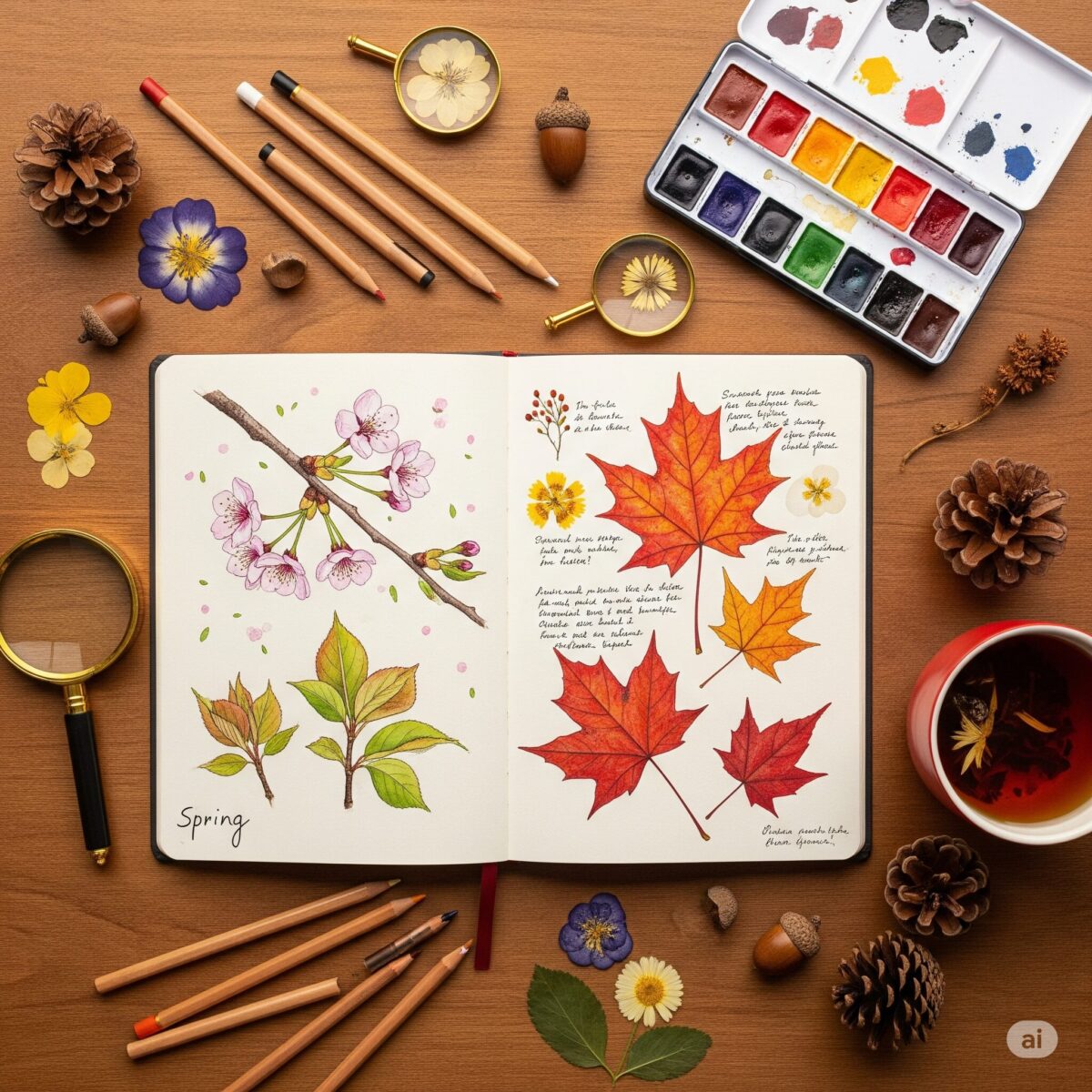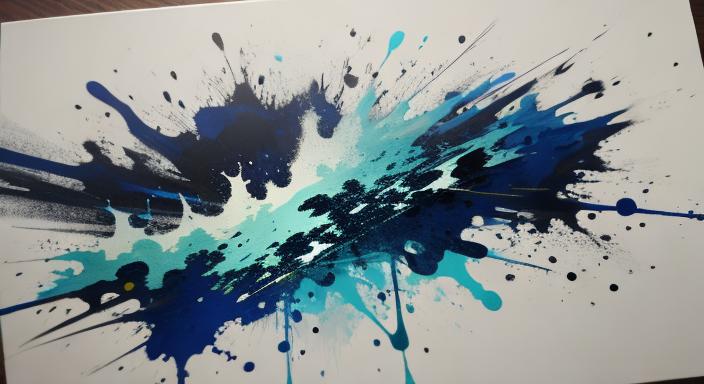Starting a nature journal opens up a magical world where art meets science, and creativity connects you with the changing seasons. Whether you’re sketching spring’s first buds or documenting winter’s quiet beauty, nature journal ideas help you slow down and truly see the natural world around you. This seasonal art practice combines observational drawing, scientific notes, and personal reflection to create a meaningful record of your outdoor experiences.
Key Points Summary
- Nature journaling combines art, science, and mindful observation across all four seasons
- Each season offers unique opportunities for botanical illustration, wildlife studies, and weather documentation
- Essential supplies include watercolor pencils, field notebooks, and basic sketching materials
- Techniques range from simple sketches to detailed scientific illustrations and phenology tracking
- Benefits include improved observation skills, stress relief, and deeper nature connection
Getting Started with Nature Journal Ideas
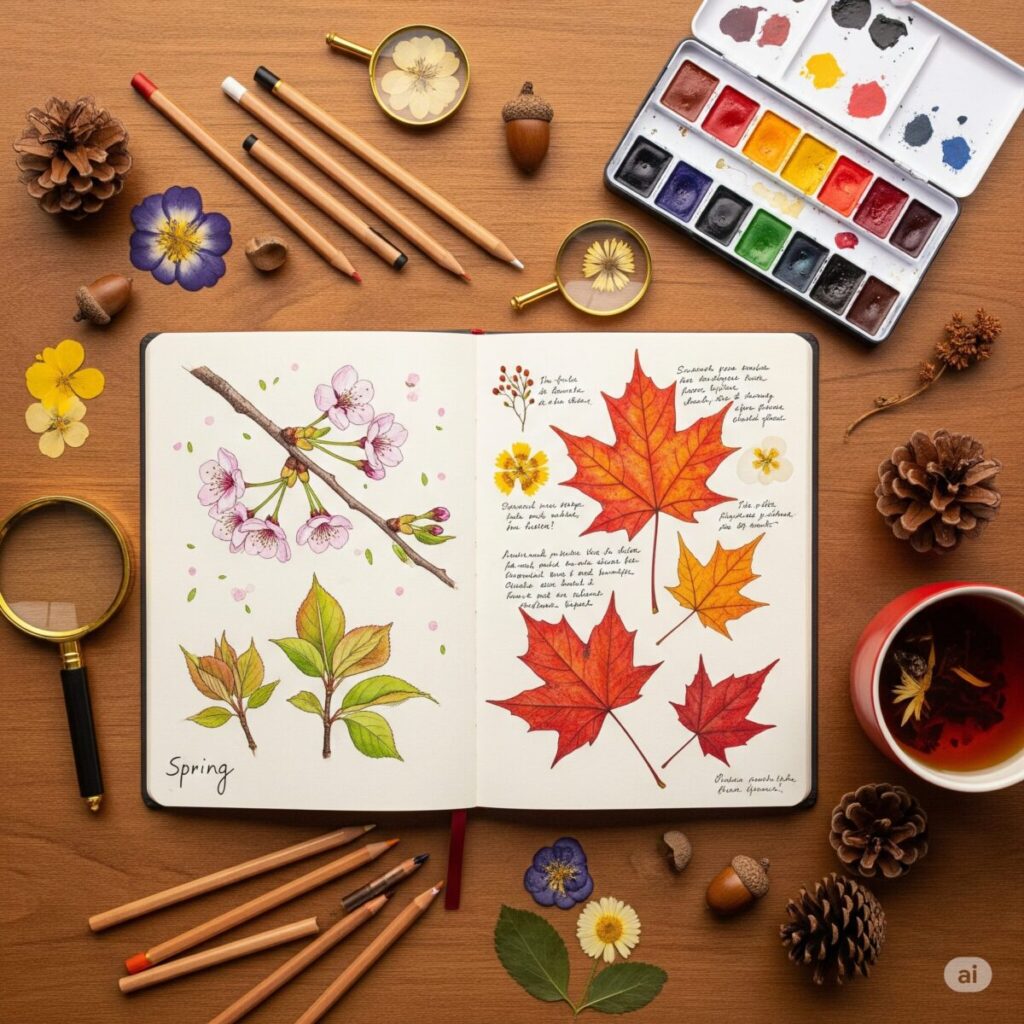
Nature journaling might seem intimidating at first, but it’s simply about paying attention and recording what you see. Think of it as keeping a visual diary of the natural world. You don’t need to be an artist to start – even simple sketches combined with written observations create valuable documentation of your outdoor experiences.
The beauty of nature journaling lies in its flexibility. Some days you might focus on detailed botanical illustration of a single leaf, while other times you’ll capture quick sketches of birds or insects. Your journal becomes a personal field guide filled with discoveries from your own backyard or favorite hiking spots.
To begin, choose a notebook that feels comfortable in your hands and fits easily in a backpack. Many naturalists prefer hardbound journals that can withstand outdoor conditions. Start with easy drawing subjects like leaves, flowers, or simple landscapes before moving to more complex observations.
Essential Supplies for Nature Journaling
Your nature journaling kit doesn’t need to be expensive or complicated. Here’s what most naturalists recommend for beginners:
| Basic Supplies | Advanced Options |
|---|---|
| Field notebook | Watercolor journal |
| Pencils (2H, HB, 2B) | Watercolor pencils |
| Eraser | Small paint set |
| Ruler | Magnifying glass |
| Basic colored pencils | Field guides |
The key is portability. Your supplies should fit comfortably in a small bag so you can take them anywhere. As you develop your practice, you might add specialty items like a portable easel or weather-resistant pens.
Spring Nature Journaling: Awakening and Growth
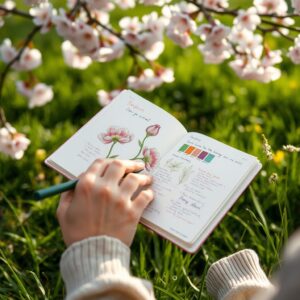
Spring brings the most dramatic changes to document in your nature journal. This season of awakening offers endless opportunities for botanical sketching and phenology tracking. Phenology is simply the study of seasonal timing – like when flowers first bloom or birds return from migration.
Recording Seasonal Plant Changes
Start by choosing a few plants near your home to observe throughout spring. Document their progression from bare branches to budding to full leaf. This creates a fascinating visual timeline of seasonal changes. Use watercolor tree painting techniques to capture the delicate colors of new growth.
Create before-and-after sketches of the same tree or bush, noting dates and weather conditions. Many nature journalists use a simple code system: circles for buds, triangles for new leaves, and stars for first flowers. This makes it easy to track patterns year after year.
Wildlife Behavior Observation
Spring migration brings opportunities for bird studies and animal behavior documentation. You don’t need to be an expert birder – simple sketches of body shapes, beak types, and feeding behaviors create valuable observations. Note the time of day, weather, and specific behaviors you observe.
“The goal isn’t to create museum-quality illustrations, but to train your eye to really see what’s happening in nature around you.”
John Muir Laws, nature journaling expert
Summer Nature Journal Activities and Techniques
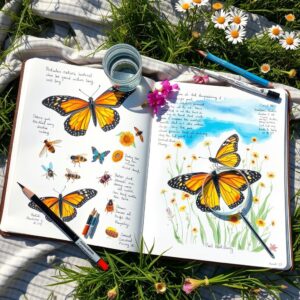
Summer’s abundance can feel overwhelming for nature journalists, but this season offers the best conditions for detailed studies and extended outdoor sketching sessions. The long daylight hours and stable weather make summer perfect for developing your botanical art techniques.
Insect and Butterfly Studies
Summer brings insects into full activity, providing fascinating subjects for detailed observation. Butterflies, bees, and beetles offer opportunities to practice close-up sketching and color studies. Use a magnifying glass to examine wing patterns, body segments, and other details that might escape casual observation.
Create collection pages featuring different insects found in one location. This helps you understand the ecological connections in your local environment. Don’t worry about perfect identification – focus on accurate observation and recording what you actually see.
Flower and Plant Documentation
Summer’s peak growing season offers the most diverse subjects for plant studies. Practice drawing different flower shapes, leaf patterns, and growth habits. This is an excellent time to experiment with watercolor pencil techniques for capturing vibrant summer colors.
Try creating field guides pages for plants in your area, combining sketches with pressed specimens and written notes about habitat and growing conditions. This scientific approach to nature journaling contributes to citizen science efforts while improving your observation skills.
Fall Nature Observation and Documentation
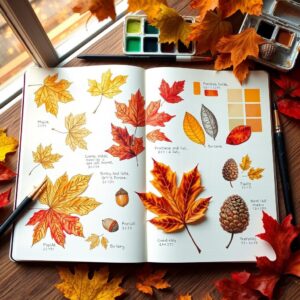
Autumn transforms familiar landscapes into a kaleidoscope of colors, making it perhaps the most visually dramatic season for nature journaling. Fall documentation focuses heavily on color studies, seed collection, and animal preparation behaviors.
Seasonal Color Studies
Fall offers the perfect opportunity to practice color mixing and observation. Create color wheels showing the progression of leaf colors in your area. Many nature journalists create “color recipes” – notes about which pigments or pencil colors best match natural autumn hues.
Document the same trees you observed in spring, noting how environmental factors like rainfall and temperature affect color intensity and timing. This long-term observation develops your understanding of ecological patterns and improves your artistic skills simultaneously.
Seed and Fruit Collection
Fall’s seed dispersal season provides fascinating subjects for detailed scientific illustration. Sketch different seed types – winged maple seeds, spiky sweet gum balls, smooth acorns – and note their dispersal methods. Many seeds can be pressed and mounted directly in your journal alongside your drawings.
This practice connects your artistic observation with ecological understanding. Why do different plants produce such varied seed types? How do these shapes and structures help ensure species survival?
Winter Nature Journaling: Finding Beauty in Dormancy
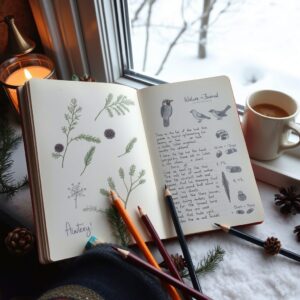
Winter challenges nature journalists to find beauty in subtlety. This season of dormancy offers opportunities for detailed studies of tree architecture, evergreen plants, and animal tracking that might be overlooked during more active seasons.
Evergreen Plant Studies
When deciduous trees are bare, evergreens become prominent landscape features. Practice distinguishing between different conifers by studying their needle arrangements, cone shapes, and branching patterns. This detailed observation improves both your botanical knowledge and drawing skills.
Create reference pages showing how to identify local evergreens, combining sketches with written descriptions of key identifying features. This practical field guide approach makes your journal a valuable long-term resource.
Animal Tracking and Winter Wildlife
Snow provides perfect conditions for animal tracking studies. Sketch paw prints, note gait patterns, and document feeding signs like chewed bark or scattered seed hulls. Even without snow, winter wildlife observation teaches patience and careful attention to subtle movements and behaviors.
Focus on birds that remain active in winter – their behaviors and adaptations provide fascinating subjects for both artistic and scientific documentation. Note how different species handle cold weather and food scarcity.
Advanced Nature Journal Techniques and Methods
As your nature journaling practice develops, you might explore more sophisticated documentation methods and artistic techniques. These advanced approaches can deepen both your artistic skills and ecological understanding.
Mixed Media and Creative Techniques
Experiment with combining different materials in your journal entries. Wet-on-wet watercolor methods can capture atmospheric effects like morning mist or storm clouds. Pressed flowers and leaves add texture and actual specimens to your drawings.
Consider integrating photography with traditional sketching, using photos as reference for detailed studies created at home. Some nature journalists create QR codes linking to digital content like sound recordings of bird songs or time-lapse videos of plant growth.
Scientific Documentation Methods
Develop your own notation systems for recording weather conditions, behavior observations, and seasonal timing. Many naturalists use symbols and abbreviations that allow quick note-taking in the field. Create legends in your journal explaining your personal codes and measurement systems.
Practice creating scale drawings using rulers or grid paper. Accurate proportions and measurements make your artistic observations scientifically valuable. This attention to detail improves both your observational skills and artistic accuracy.
YouTube Tutorial: Nature Journaling Basics
The Mental Health Benefits of Nature Journaling
Beyond artistic and scientific benefits, nature journaling provides significant mental health advantages. This mindful art practice encourages slow, contemplative observation that naturally reduces stress and anxiety.
The combination of outdoor time, creative expression, and focused attention creates a form of moving meditation. Many practitioners report improved mood, better sleep, and increased environmental awareness through regular nature journaling practice.
Building a Year-Round Practice
Consistency transforms casual nature observation into a meaningful long-term practice. Try to spend at least 15-20 minutes outdoors with your journal several times per week. Even brief sessions in your backyard or a local park provide valuable documentation opportunities.
Set seasonal goals for your practice – perhaps tracking one plant through an entire growing season or documenting all the birds you observe in a particular location. These focused projects provide structure while maintaining the flexibility that makes nature journaling enjoyable.
Remember that your nature journal ideas can evolve with your interests and skill level. What starts as simple sketches might develop into detailed scientific illustration or artistic landscape studies. The key is maintaining regular outdoor observation and documentation, allowing your practice to grow naturally over time.
Frequently Asked Questions
What is nature journaling? Nature journaling combines artistic observation with scientific documentation, creating visual records of outdoor experiences through sketches, notes, and collected specimens.
How to keep a nature journal? Keep your nature journal by making regular outdoor observations, combining simple sketches with written notes about weather, behavior, and seasonal changes.
What supplies do I need for nature journaling? Basic supplies include a field notebook, pencils, colored pencils or watercolor pencils, an eraser, and a ruler. Advanced options include watercolor paints and a magnifying glass.
How often should I nature journal? Aim for 2-3 sessions per week, even if brief. Consistency matters more than duration – even 15-minute sessions provide valuable documentation.
Can beginners start nature journaling? Absolutely! Nature journaling welcomes all skill levels. Focus on observation rather than artistic perfection, and your skills will develop naturally over time.
What’s the difference between a nature journal and a sketchbook? Nature journals combine art with scientific observation and written notes, while sketchbooks typically focus primarily on artistic practice and drawing exercises.
Additional Resources
- John Muir Laws Nature Journaling: johnmuirlaws.com – Comprehensive resources and tutorials from the leading nature journaling expert
- Cornell Lab of Ornithology: allaboutbirds.org – Bird identification guides and citizen science projects
- Nature Journaling Week: naturejournalingweek.com – Annual event with free resources and community challenges
- iNaturalist App: inaturalist.org – Digital platform for sharing and identifying nature observations
- Phenology Networks: usanpn.org – Citizen science opportunities for seasonal observation data
- Field Sketching Resources: fieldsketching.com – Techniques and tutorials for outdoor drawing

